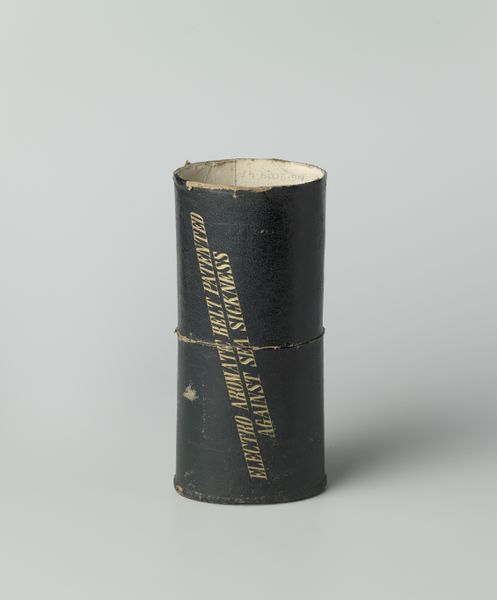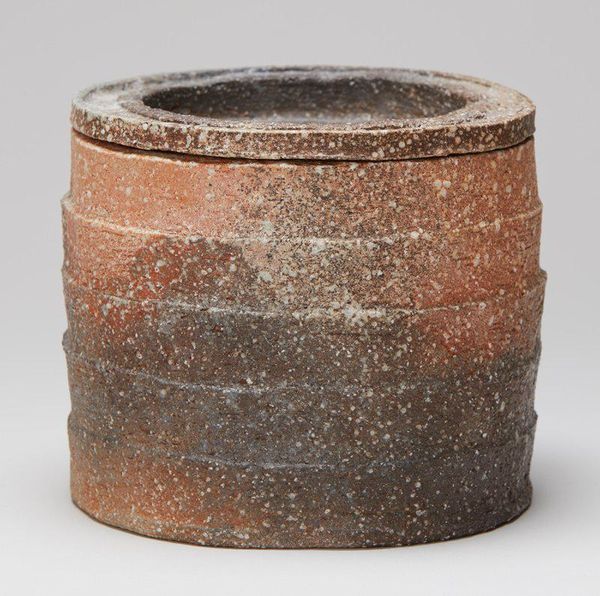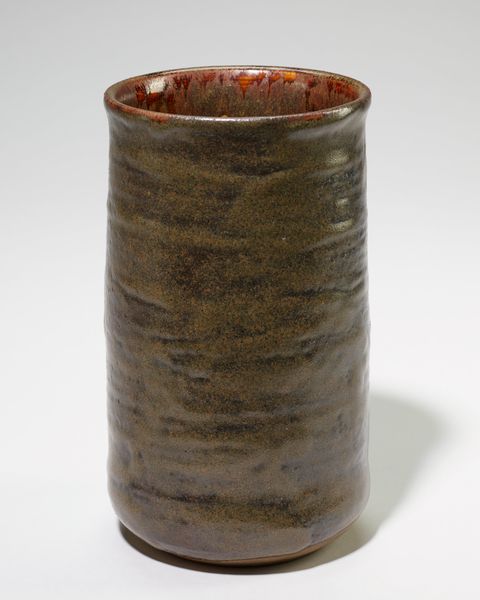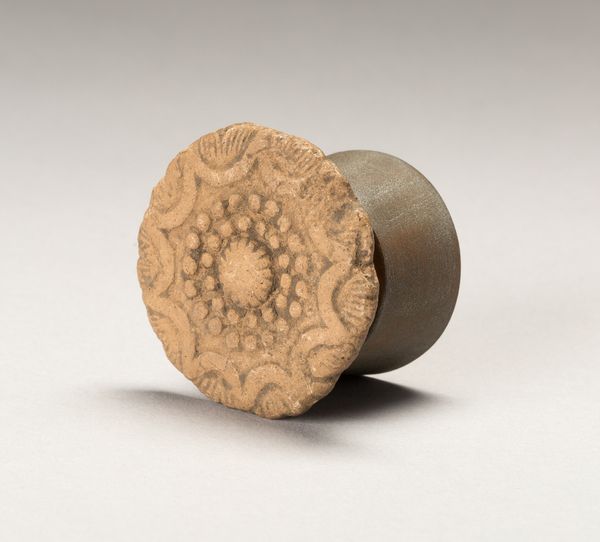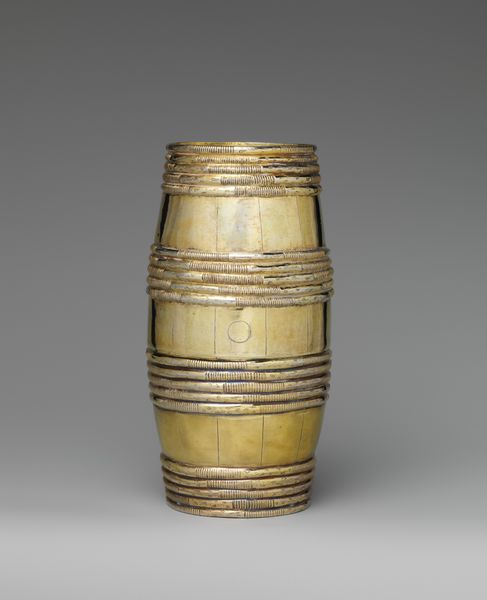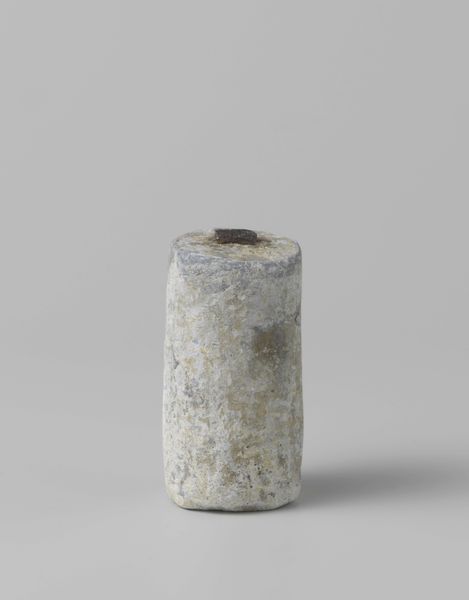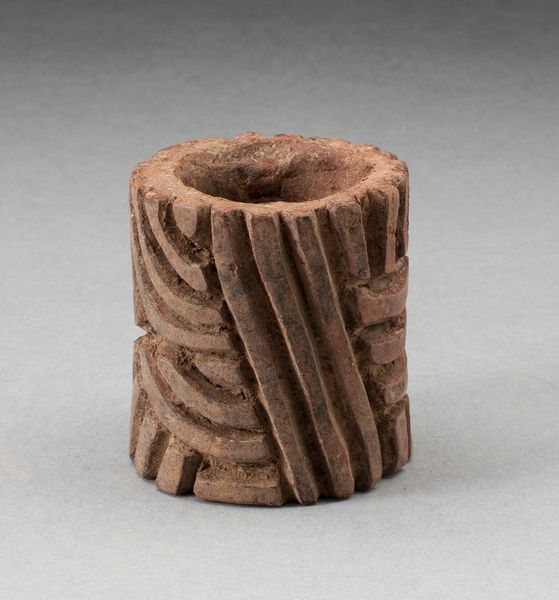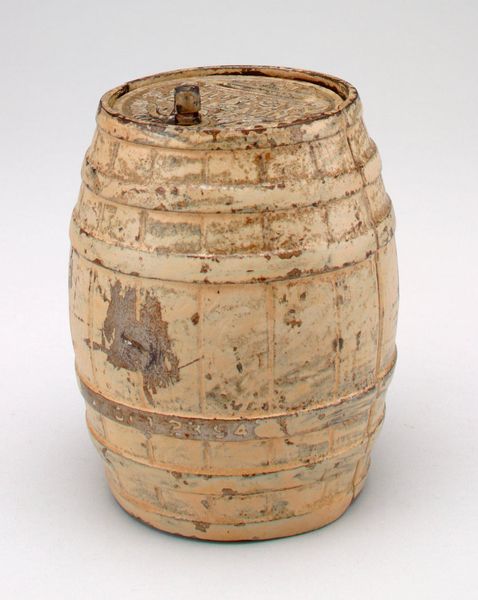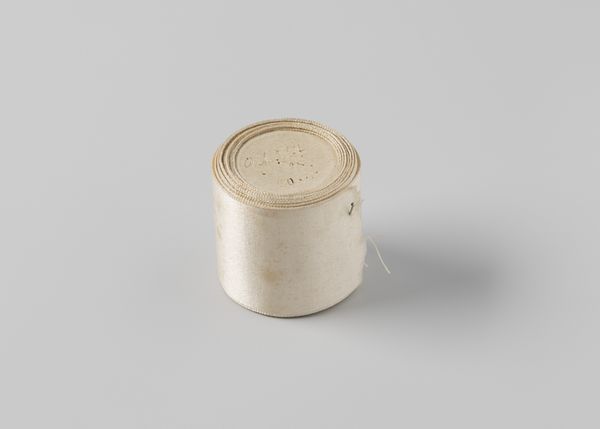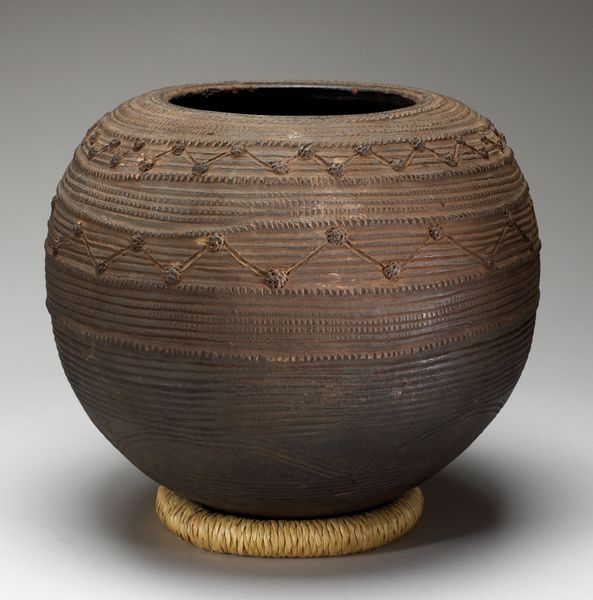
sculpture, wood
#
geometric
#
sculpture
#
romanticism
#
wood
Dimensions: height 83.5 cm, diameter 23 cm
Copyright: Rijks Museum: Open Domain
Curator: Alright, let's talk about these remarkable objects, three wood "Barrels for a mechanical organ," dating from around 1815 to 1825, created by Harmanus Dolman. What’s your initial impression? Editor: My first thought is almost a sort of muted frenzy—the repetition of marks across the surface has this relentless quality. It’s very tactile and rhythmic but somehow gives the impression of restrained mania! Curator: That's fascinating. And you're not far off. These barrels are more than simple shapes; they are coded instructions. Think of them as an early form of computer programming. The pins you see are meticulously placed to pluck the teeth of a comb inside the organ, each pluck corresponding to a specific note. The arrangement? An entire melody! Editor: I see. A very physical, material encoding of music. Considering their age, there’s a clear pre-digital ingenuity at work here. And if you reflect on that muted, repetitive pattern... perhaps it embodies the strictures and the potential repression of the Biedermeier era, a period defined by the domestic sphere and, to some extent, patriarchal social orders. Music, even mechanical music, might have been a safe, regulated outlet. Curator: I like the suggestion of music as release—safe, or not. Perhaps for Dolman, building these barrels offered his own escape, crafting moments of aural beauty inside those cylindrical cages. I keep envisioning his focus, like a watchmaker...or a poet finding his rhyme, as if these objects hold encoded, even private messages in the placement of pins. Editor: Absolutely, because isn't all creation about control? An individual response to societal pressure? And you’re right, the craft involved is crucial here: Harmanus Dolman creating not just music but tangible things—these almost feel like manifestos in wood. Curator: Manifestos that sing! The Romantic period meets the industrial. These "barrels" prompt us to listen closer to what they’re telling us about history and about the echoes found in craft and artistry that time cannot easily erode. Editor: Well, on that note, they also show how even in a world trending toward mechanization, a soul always tries to break free and express itself through creativity and human agency. I have enjoyed letting my own song fly today and feeling how they vibrate.
Comments
No comments
Be the first to comment and join the conversation on the ultimate creative platform.
